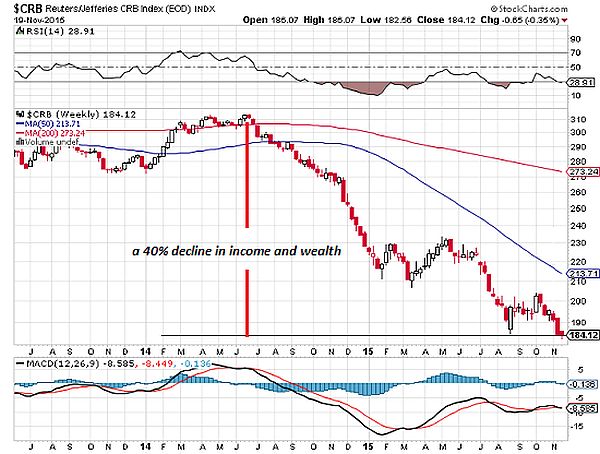 Charles Hugh Smith – I have long maintained that the structural imbalances of debt and risk that triggered the Global Financial Meltdown of 2008-2009 have effectively been transferred to the foreign exchange (FX) markets.
Charles Hugh Smith – I have long maintained that the structural imbalances of debt and risk that triggered the Global Financial Meltdown of 2008-2009 have effectively been transferred to the foreign exchange (FX) markets.
This creates a problem for the central banks that have orchestrated the “recovery” by goosing asset bubbles in stocks, real estate and bonds: unlike these markets, the currency-FX market is too big for even the Federal Reserve to manipulate for long.
The FX market trades roughly the entire Fed balance sheet of $4.5 trillion every day or two.
Currencies are in the midst of multi-year revaluations that will destabilize the tottering towers of debt, leverage and risk that have propped up global growth since 2009.
Though the relative value of currencies is discovered in the global FX market, there are four fundamental factors that influence the value of any currency:
1. Capital flows into and out of the currency (and the nation issuing it).
2. Perceived risk, specifically, will this currency preserve my global purchasing power (i.e. capital) or erode it?
3. The yield or interest rate paid on bonds denominated in this currency.
4. The scarcity or over-abundance of the currency.
If we dig even deeper, we find that currencies reflect the income streams and assets of the issuing nation. Consider an oil exporting nation that has seen both its income from selling oil and the underlying value of its oil in the ground fall by more than 50%.
Why shouldn’t that nation’s currency decline in parallel with the erosion of income and asset valuation? As a nation’s income and asset base decline, there is less national income to pay interest on sovereign bonds, less private income to tax, and a reduced asset base for additional borrowing.
This is especially true if the nation issued debt profligately in good times. Recall that debt and currency are one in the same: if someone trades euros for a U.S. Treasury bond, they don’t just own a bit of sovereign debt–they own the currency of the nation that issued the bond (in this case, the U.S. dollar).
This is equally true of corporate bonds–all the debt is denominated in a specific currency, and owners of the bonds are not just betting that the interest will be paid and the bond redeemed at maturity, but that the underlying currency will not lose much of its global purchasing power.
One proxy for the absolute destruction of commodity-based income streams and assets is the CRB Index. No wonder emerging economies that depend heavily on the export of commodities are cratering, along with the currencies they issue.

Once participants become aware of the rising risk of holding a depreciating currency, the trickle out quickly becomes a torrent of fleeing capital. Continue reading . . .
SF Source Of Two Minds Nov 2015
[widget id=”text-44″]
